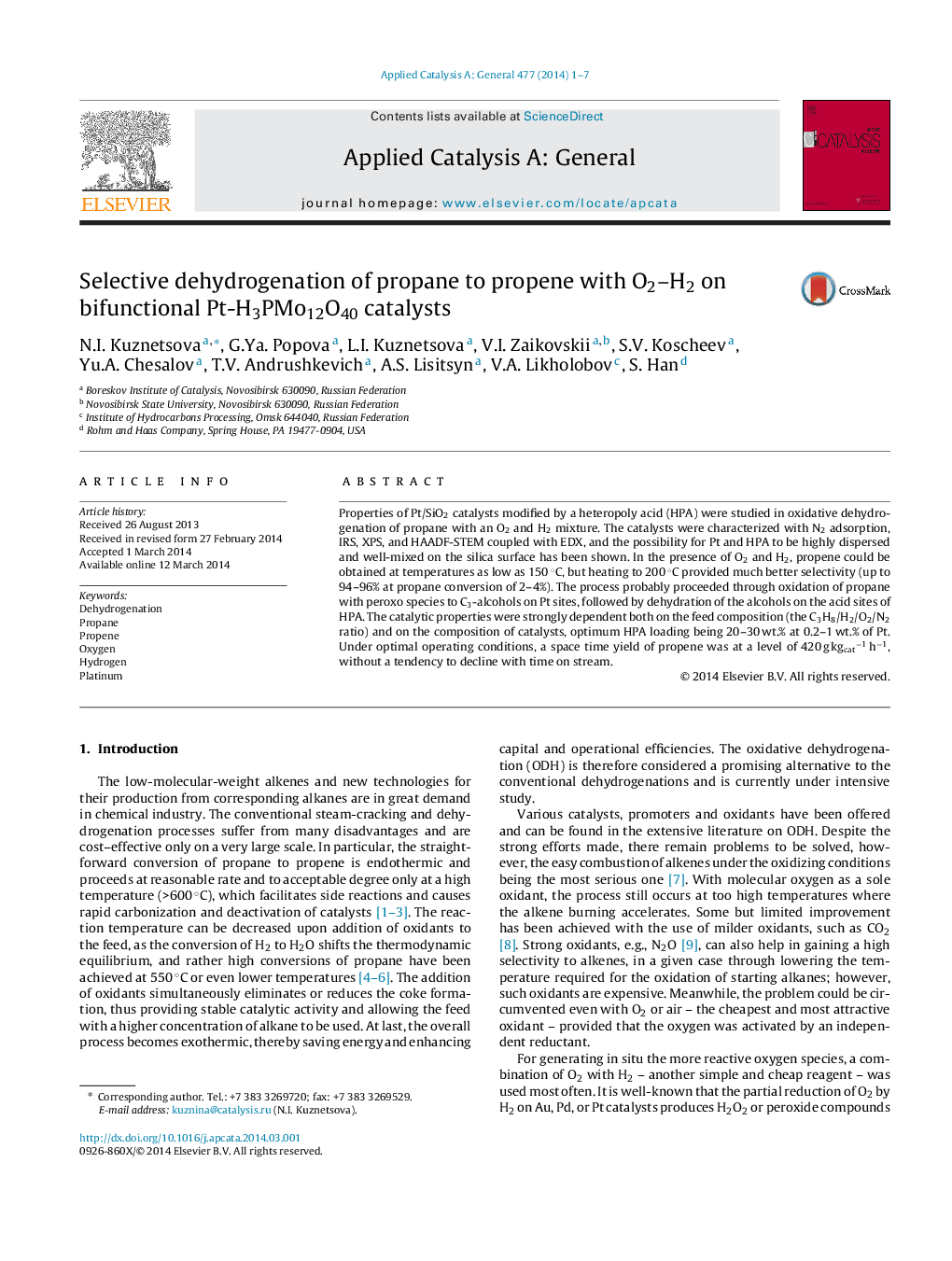| Article ID | Journal | Published Year | Pages | File Type |
|---|---|---|---|---|
| 39701 | Applied Catalysis A: General | 2014 | 7 Pages |
•Propene can be obtained selectively from propane over Pt-H3PMo12O40 catalysts.•High rate of dehydrogenation at a low temperature with O2–H2.•Simple catalyst preparation, stable activity, and good reproducibility of properties.
Properties of Pt/SiO2 catalysts modified by a heteropoly acid (HPA) were studied in oxidative dehydrogenation of propane with an O2 and H2 mixture. The catalysts were characterized with N2 adsorption, IRS, XPS, and HAADF-STEM coupled with EDX, and the possibility for Pt and HPA to be highly dispersed and well-mixed on the silica surface has been shown. In the presence of O2 and H2, propene could be obtained at temperatures as low as 150 °C, but heating to 200 °C provided much better selectivity (up to 94–96% at propane conversion of 2–4%). The process probably proceeded through oxidation of propane with peroxo species to C3-alcohols on Pt sites, followed by dehydration of the alcohols on the acid sites of HPA. The catalytic properties were strongly dependent both on the feed composition (the C3H8/H2/O2/N2 ratio) and on the composition of catalysts, optimum HPA loading being 20–30 wt.% at 0.2–1 wt.% of Pt. Under optimal operating conditions, a space time yield of propene was at a level of 420 g kgcat−1 h−1, without a tendency to decline with time on stream.
Graphical abstractFigure optionsDownload full-size imageDownload high-quality image (237 K)Download as PowerPoint slide
